Four identical balls A,B,C and D are placed in a line on frictionless horizontal surface. A and D are moed with the same speed u towards the middle as shown. Assuming elastic collisions, find the final velocities.

A and D collides elastically with B and C respectively and come to rest but B and C starts moving with velocity u towards each other as shown

B and C collides elastically and exchange their velocities to move in opposite directions

Now, B and C collides elastically with A and D respectively and come to rest but A and D starts moving with velocity u away from each other as shown

∴ Final velocities VA=u(←),VB=0,VC=0
and VD=u(→)
Topper's Solved these Questions
- CENTRE OF MASSBOOK - MOTIONCHAPTER - CENTRE OF MASSEXERCISE - Exercise - 1
71 Videos
- CENTRE OF MASSBOOK - MOTIONCHAPTER - CENTRE OF MASSEXERCISE - Exercise - 2 (Level-I)
40 Videos
- Capacitance BOOK - MOTIONCHAPTER - Capacitance EXERCISE - EXERCISE -4 LEVEL II
19 Videos
- CIRCULAR MOTIONBOOK - MOTIONCHAPTER - CIRCULAR MOTIONEXERCISE - EXERCISE - 4
16 Videos
Similar Questions
Three balls A,B and C of same mass m are placed on a frictionless horizontal plane in a straight line as shown. Ball A is moved with velocity u towards the middle ball B. If all the collisions are elastic, find the final velocities of all the balls.

View SolutionA block of mass 2 kg is pushed towards a very heavy object moving with 2 m/s closer to the block (as shown). Assuming elastic collision and frictionless surface, find the final velocities of the blocks.
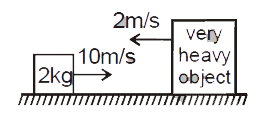
View Solution
Knowledge Check
Two small balls A and B, each of mass m, are joined rigidly at the ends of a light rod of length L. They are placed on a frictionless horizontal surface. Another ball of mass 2 m moving with speed u towards one of the ball and perpendicular to the length of the rod on the horizontal frictionless surface as shown in the figure. If the coefficient of restitution is 1/2 then the angular speed of the rod after the collision will be
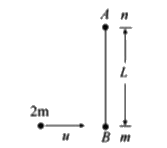 A43ulBulC23ulDnone of these
A43ulBulC23ulDnone of theseThree identical blocks A, B and C are placed on horizontal frictionless surface. The blocks B and C are at rest. But A is approaching towards B with a speed of 10ms−1

The coefficient of restitution for all collision is 0.5. The speed of the block C just after collision isA5.6ms−1B6.4ms−1C3.2ms−1D4.6ms−1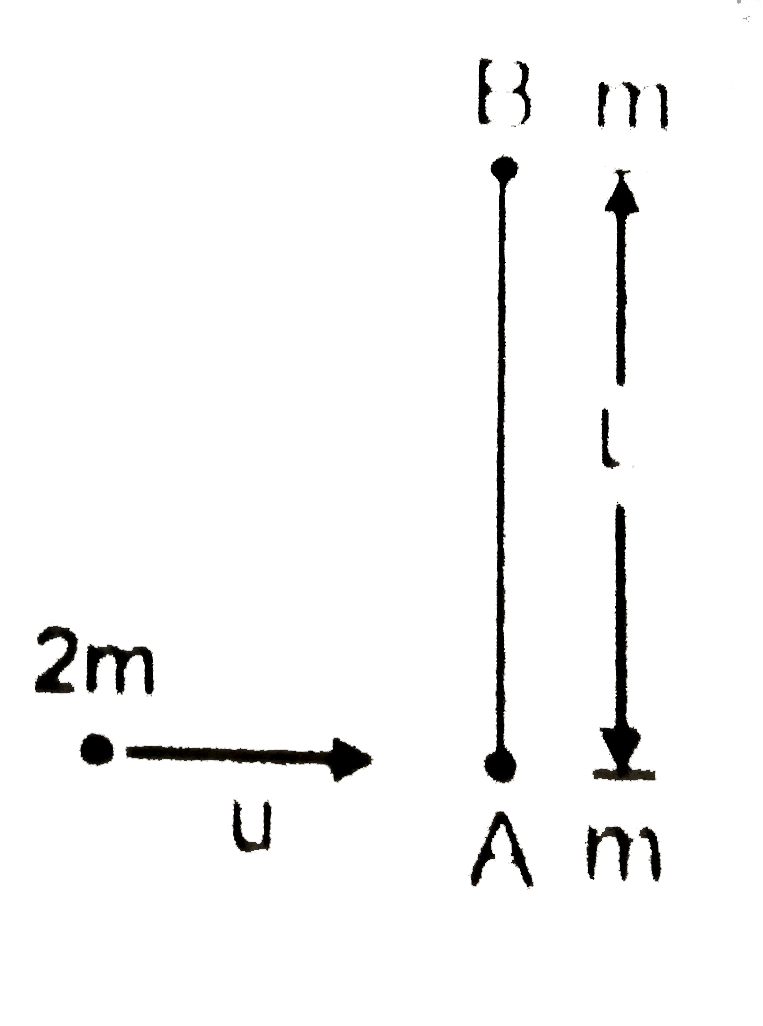
Two small balls A and B, each of mass m, are joined rigidly at the ends of a light rof of length L. they are placed on a frictionless horizontal surface another ball of mass 2 m moving with speed u towards one of the ball and perpendicular to the length of the rod on the horizontal frictionless surface as shown int he figure. if the coefficient of restitution is 1/2 then the angular speed of the rod after the collision will beA43uLBuLC23uLDnone of these
Three identical balls 1, 2 and 3 are placed together at rest on a smooth horizontal surface. A fourth identical ball moving with velocity u in line of first three balls collides head on elastically as shown in figure, then

View SolutionTwo identical blocks A and B connected by massless string, are placed on a frictionless horizontal plane. A bullet having the same mass, moving with speed u strikes block B from behind as shown. If the bullet gets embedded into block B then find
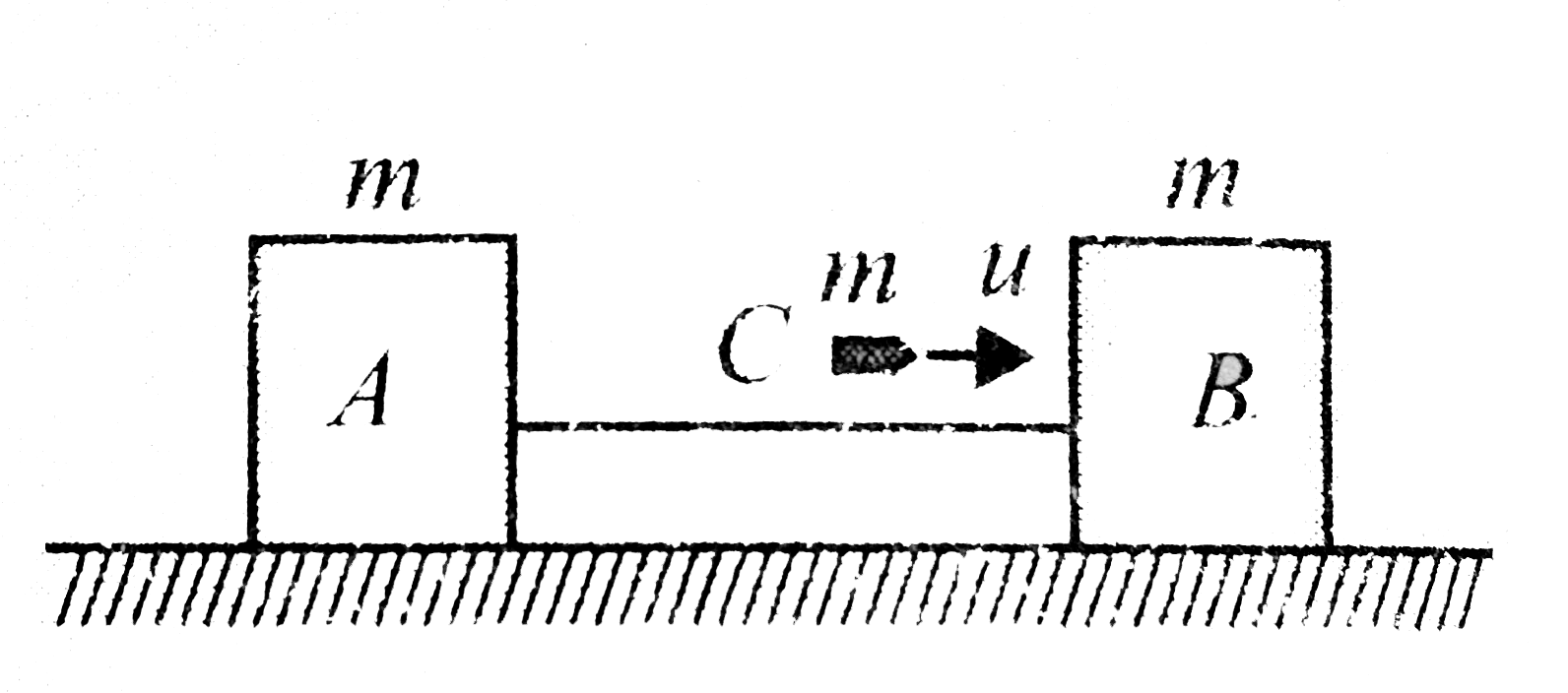
a. the velocity of A,B,C after collision.
b. impulse on A due to tension in the string,
c. impulse on C due to normal force of collision,
d. impulse on B due to normal force of collision.
View SolutionThree balls A, B and C are placed on a smooth horizontal surface. Given that mA=mC=4mB. Ball B collides with ball C with an initial velocity v as shown in figure. Find the total number of collisions between the balls. All collisions are elastic.

View SolutionTwo identical balls, each of mass m, are tied with a string and kept on a frictionless surface. Initially, the string is slack. They are given velocities 2u and u. in the same direction. Collision between the balls is perfectly elastic.
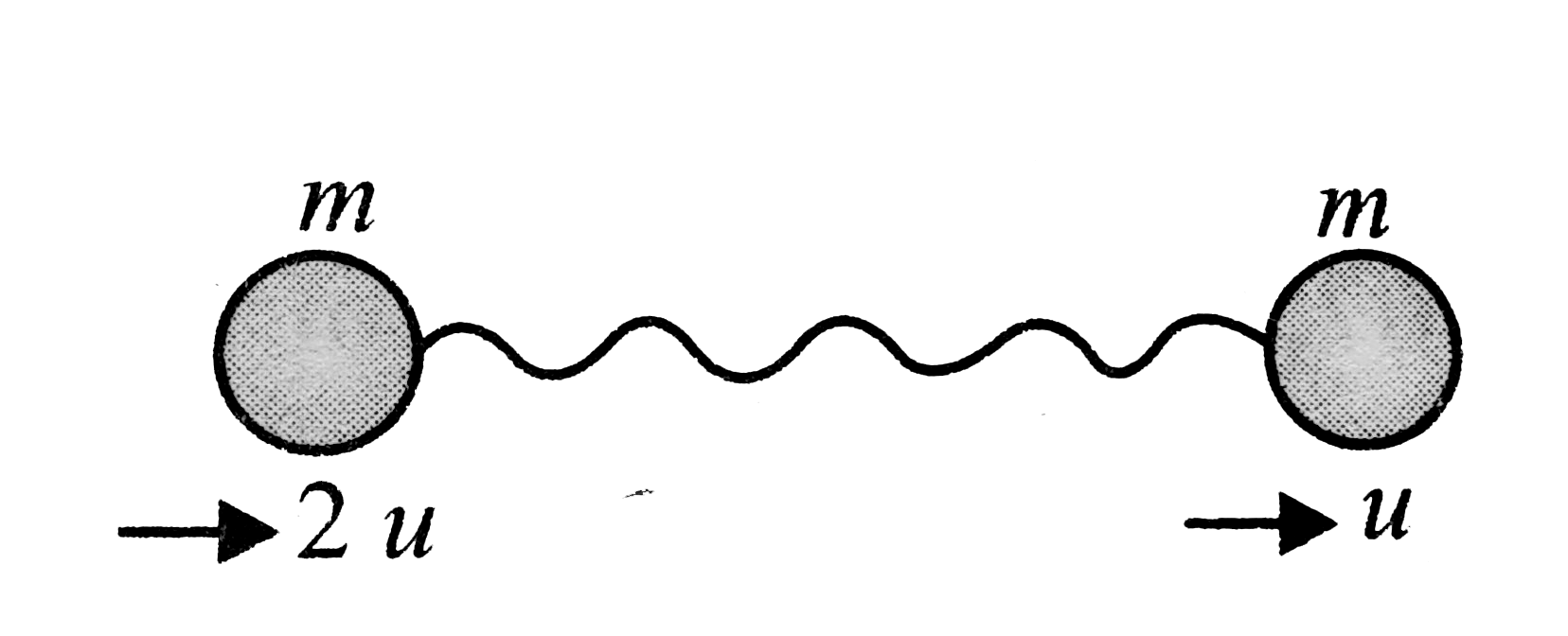
What is the final in kinetic energy of the balls?
View SolutionThree identical spherical balls A, B and C are placed on a table as shown in the figure along a straight line. B and Care at rest initially.

The ball A hits B head on with a speed of 10ms−1. Then after all collisions (assumed to be elastic) A and B are brought to rest and C takes off with a velocity of
View Solution